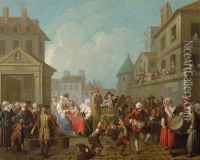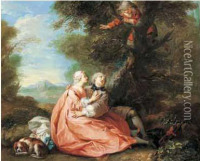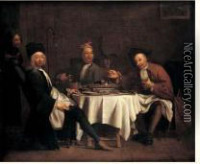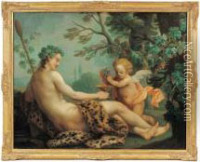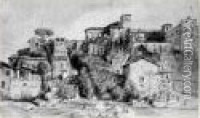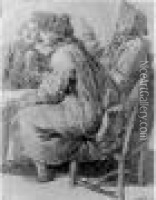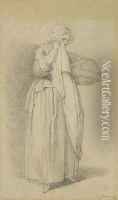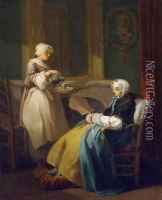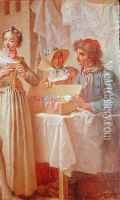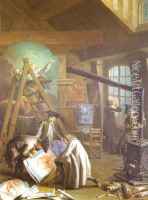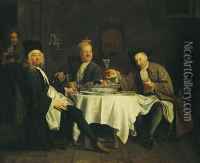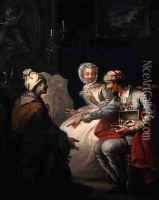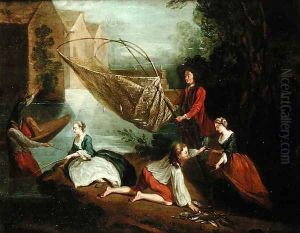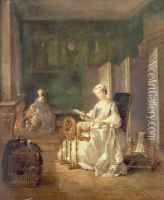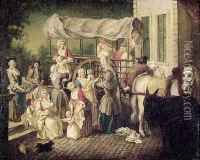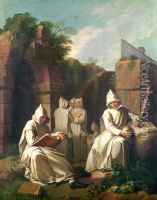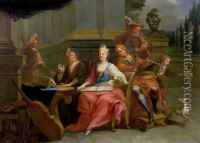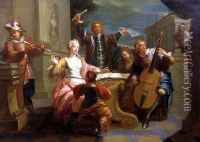Etienne Jeaurat Paintings
Étienne Jeaurat was a French painter and engraver born on February 9, 1699, in Vermenton, Burgundy, France. He is best known for his genre scenes and historical paintings. Jeaurat was a pupil of his uncle, the painter Edme Jeaurat, and later, he studied under the renowned French artist Antoine Watteau. Jeaurat's work was influenced by the Rococo style, which was prominent during his time, characterized by its lightness, elegance, and use of playful themes.
Jeaurat became a member of the Royal Academy of Painting and Sculpture in 1725, which was a significant milestone in his career. He received recognition and commissions from the French aristocracy and worked for the Gobelins Manufactory, which was the most important tapestry-producing enterprise in Europe. Throughout his career, Jeaurat exhibited at the Paris Salon, the official art exhibition of the Académie des Beaux-Arts in Paris.
His genre scenes often depicted the daily life of Parisians and were celebrated for their vivid detail and narrative quality. One of his notable works is 'The Visit to the Wet Nurse,' which presents a domestic scene with emotional depth and a keen observation of social customs.
Étienne Jeaurat's career spanned over several decades, and he continued to paint until his death on December 14, 1789, just a few months after the outbreak of the French Revolution. Despite his success during his lifetime, Jeaurat's work was somewhat overshadowed by the more famous artists of his era, and today, he is less well-known compared to his contemporaries. Nevertheless, his paintings remain a valuable part of French art history, offering insights into the culture and society of the 18th century.
